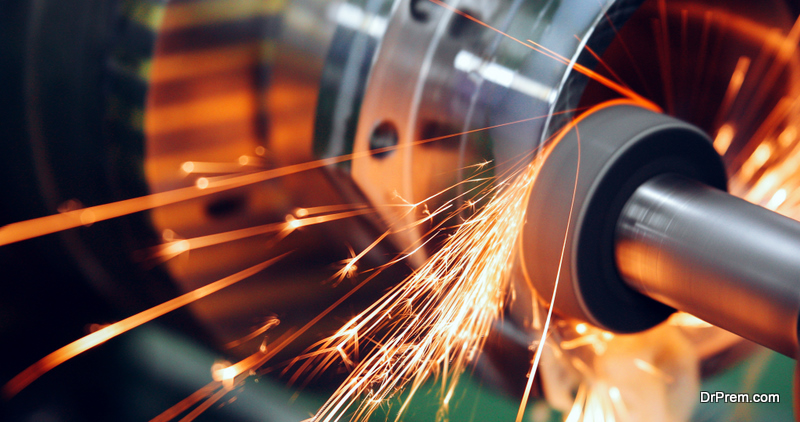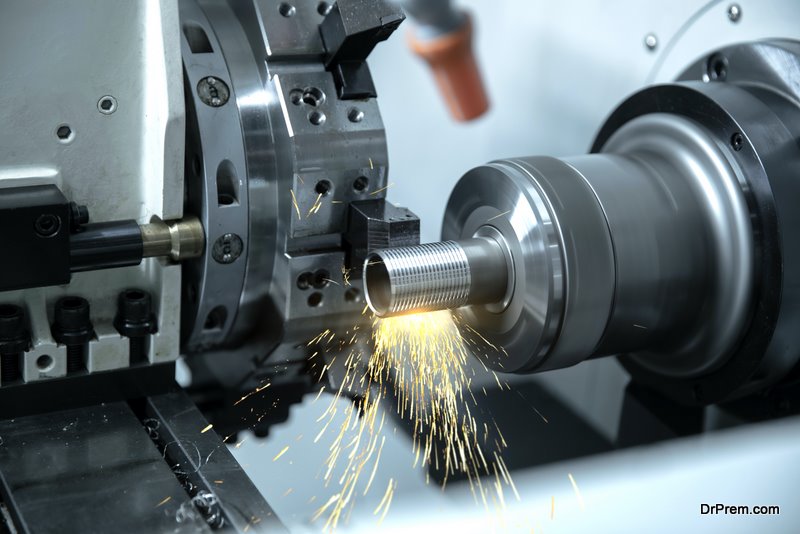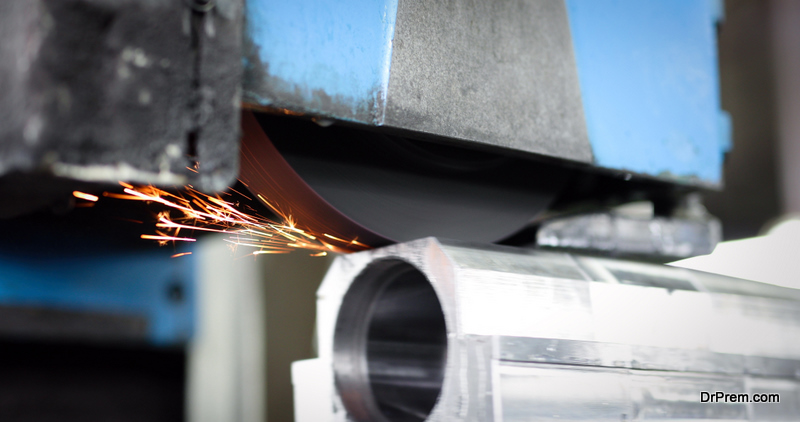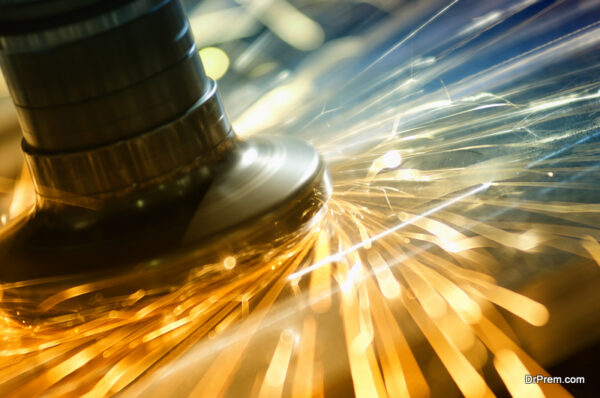Precision grinding is the machining process of giving a surface-specific form by removing metal. Commonly precision grinding is used to achieve flatness, parallelism, squareness, perpendicularity, centering, and contour. Precision grinding is performed on parts fabricated or machined by end-users, so accuracy is critical. Grinding can help clean up surfaces, remove excess material, remove burrs, radius edges, produce flat surfaces with parallel edges, and finish to very close tolerance.
1. High Precision

Precision grinding is an automated process that targets extremely accurate shaping of highly complex parts, where tolerance is critical. There are extensive applications in aerospace, nuclear power plants, military equipment, medical equipment, and the manufacturing industries.
With the trend toward miniaturization in hardware components, conventional spot grinding methods are becoming inadequate to achieve high levels of accuracy. Tolerances are in the nanometer range – in fact, 1000 times smaller than a millimeter. Precision grinding automation combines with state-of-the-art vision systems that provide automatic setup and part positioning for each to achieve high accuracy. You can read more here about precision grinding technology.
The precision grinding process, sometimes referred to as profile grinding, is a technique that finds its application across a wide variety of components to achieve an accurate size on the inside of the metal part. Precision griding helps produce machinery parts that fit precisely on the chambers or cavities of a product.
2. Cost-Effective
One of the significant reasons precision grinding is vital on metal components is that it’s a cost-effective type of machining. Precision grinding can be a lot more cost-effective than other processes. It provides a competitive advantage that is important to a production process.
Precision grinding is cost-effective, especially when you want a certain kind of precision. For example, if you wanted to grind three concave surfaces together on an object, the job would be easy with precision grinding machines that form and at the same time perform precision grinding on the same entity.
Precision grinding is free of the cyclical energy usage of mechanical machining, making it cost-effective to produce small-to-medium lots for prototype or short production runs.
3. Flexible and Effective

Precision grinding has its roots in targeting specific points on a metal surface. The method features a high degree of flexibility and effectiveness, which may also serve as the generator of its popularity among companies that rely on precision grinding to take fundamental metal components through an extensive metallurgical process for the sake of machining and material machining.
Precision grinding is a flexible and effective metal-cutting process that can produce smooth, flat, and consistent finishes on various metals. Compared to turning with tools, precision grinding creates better surface quality, has higher cutting efficiency, and can be highly versatile for those who need it.
4. High Productivity and Quick Turnaround
It is becoming increasingly well accepted that precision grinding is an essential step in maximizing productivity.Precision grinding is beneficial for the high-speed production of quality parts with fewer rejects. Additionally, precision grinding is becoming a preferred practice because it eliminates secondary operations for faster product turnaround times.
The precision grinding process has a high production rate, with the grinder running at a high rate of speed, and through a large number of RPMs, it increases the ability to produce a large amount of work in a short period. Also, precision grinding includes surface finishes that are repeatable hence increasing the rate of production.
5. Easy Monitoring and Quality Control

The difficulty in monitoring and quality control is one of the main challenges faced by many metal grinding companies. However, with precision grinding, a wireless sensor measuring device monitors the roughness and the cut-rate. The system can also send real-time data to a database, making it convenient for customers to check their production status and adjust if necessary.
Conclusion
Precision grinding delivers benefits throughout the entire production cycle. The results are higher productivity, lower costs, less rework, higher quality parts and tools, greater employee satisfaction, and more flexibility in scheduling.A precision grinding machine is a versatile tool for any metal worker to use. It can perform different grinding operations involving various milling cutters; flat, barred bull, bullnose, blade, and negative rake cutters. A precision grinder has fewer parts than an ordinary machine, thus decreasing the possibility of downtime because fewer parts may need replacement.
Article Submitted By Community Writer




